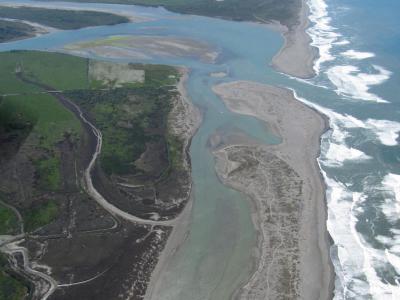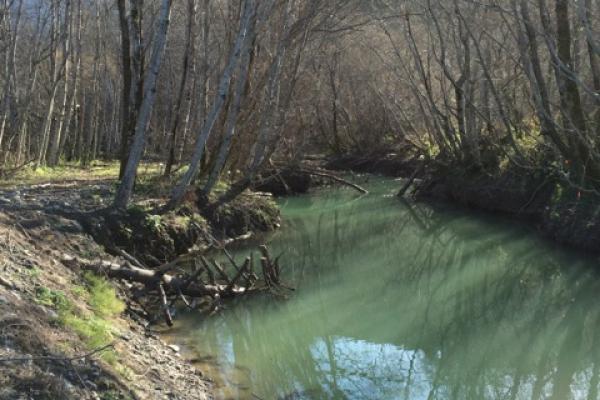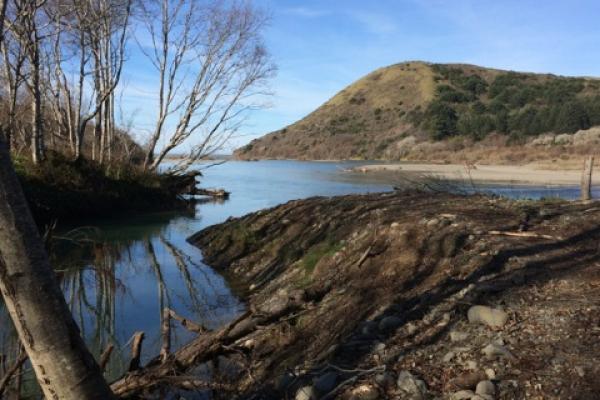Lower Mattole River and Estuary: Heliwood Placement, Riparian Planting, and Off-channel Slough Restoration
Field Tour Coordinators:
Sungnome Madrone, Mattole Salmon Group
Nathan Queener, Mattole Salmon Group
Dave Fuller, Bureau of Land Management
Conor Shea, Ph.D., USFWS
Cassie Pinnel, Mattole Restoration Council
Decades of road building and timber harvesting on steep, erodible slopes, combined with floods and naturally high rates of rainfall has resulted in a generally filled in and simplified habitat in the Mattole Lower River and Estuary area. A major planning and implementation effort is underway in this area with BLM leading an ambitious program of large wood loading, riparian planting, treating terrace margins as an approach to diversifying these previously simplified habitats.
Over the past couple decades we have seen an evolution of large wood loading techniques here in the Mattole as elsewhere. Utilizing whole trees acquired through native prairie restoration for placement in the river and estuary has led to the development of a Heliwood project type here in the Mattole. "Heliwood" is helicopter-placed wood that allows for placement of whole trees, including their limbs, boles, and root wads.
On this tour we will walk to heliwood placement sites and well as Engineered Logjam Structures (ELJ) structures. We will talk about the logistics of this type of work with helicopters, lessons learned, costs, and other factors that help make this type of work feasible and well integrated. We will see extensive riparian planting sites of varying ages, and including deep trenched willow baffles.
The Mattole is unique in that its estuary area is subject to many earthquakes and the Triple Junction earthquakes of 1992 uplifted the estuary area some 3-4 feet overnight. This uplift dis-connected a complex set of off-channel sloughs from the river. This tour will visit the site of recent slough excavation that has seen extensive salmonid use immediately after completion. We will spend time at the slough observing wildlife and talking about fish use in the slough as compared to nearby riverine and estuary locations.





